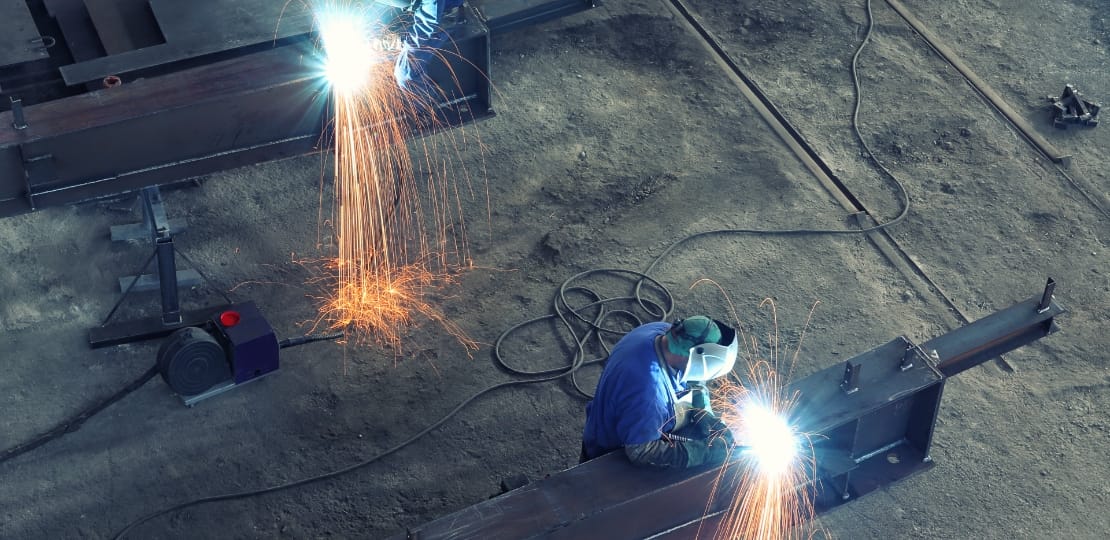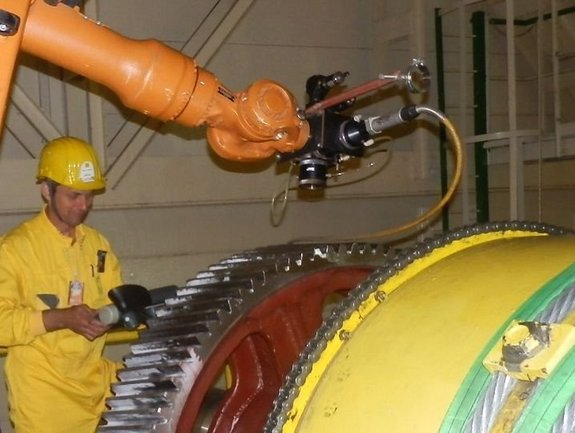Everything about Welding: Trick Insights Into Techniques and Best Practices for Success
Welding includes a variety of techniques, each fit for particular materials and applications. Comprehending these techniques, such as GMAW, SMAW, and TIG, is crucial for accomplishing suitable outcomes. Furthermore, the appropriate devices and security methods can not be overlooked. As preparation and fixing play important duties in the welding procedure, understanding these aspects can substantially boost the quality of the end product. What are the key factors that ensure an effective weld?
Recognizing Various Welding Techniques
Welding methods include a range of methods, each matched to particular applications and materials. Among the most common methods are Gas Metal Arc Welding (GMAW), Protected Metal Arc Welding (SMAW), and Tungsten Inert Gas Welding (TIG) GMAW, likewise called MIG welding, is prominent for its rate and adaptability, making it perfect for thin products. SMAW, or stick welding, is preferred for its simpleness and efficiency in outdoor settings, especially with thicker metals. TIG welding provides precision and control, making it suitable for detailed work and non-ferrous steels (Belgrade Fabrication). Each technique has its distinct benefits and factors to consider, allowing welders to select the very best approach based upon the job's demands, product type, and desired end results. Comprehending these techniques is essential for effective welding
Essential Welding Equipment and Tools
While different welding methods call for certain skills, the ideal devices and tools are just as crucial for attaining high quality outcomes. Necessary welding equipment consists of welding equipments, which differ depending upon the technique-- such as MIG, TIG, or stick welding. Protective gear, including gloves, headgears, and aprons, guarantees safety and comfort throughout the process. Additionally, clamps and components help secure products in position, ensuring precision in welds. Consumables like welding rods, wire, and shielding gas are likewise critical elements that affect the quality of the weld. Tools such as cutters and mills facilitate surface preparation and post-weld ending up, adding to an expert outcome. Purchasing high-grade tools eventually enhances the performance and effectiveness of welding projects.
Security Practices in Welding
Appropriate security practices are essential in the welding industry to shield workers from possible hazards. Welders must put on ideal personal protective equipment (PPE), consisting of headgears with appropriate shading, handwear covers, and flame-resistant garments. Sufficient ventilation is essential to lower direct exposure to hazardous fumes and gases created during the welding process. Furthermore, workers need to be trained in the correct handling of welding equipment to stop mishaps. Fire precaution, such as maintaining combustible products away from the welding area and having fire extinguishers readily available, are necessary. Routine evaluations of devices and workspaces can assist determine prospective hazards prior to they lead to mishaps. By sticking to these security methods, welders can produce a much safer working atmosphere and decrease threats related to their trade.
Readying Products for Welding
Preparing products for welding is a vital step that greatly affects the quality and honesty of the end product (Montana Mobile Welding and Repair Belgrade Welding). Correct preparation includes cleaning up the surface areas to eliminate pollutants such as dust, corrosion, and oil, which can jeopardize the weld. Methods such as grinding, fining sand, or making use of solvents are generally utilized to accomplish a clean surface area. Furthermore, making certain that the products mesh well is essential; spaces can cause weak welds. It's also important to think about the positioning and positioning of the elements, as this will certainly affect the convenience of welding and the last end result. Choosing the ideal filler material and making certain compatibility with the base metals is vital for achieving strong, durable welds.
Tips for Getting High-Quality Welds
Attaining high-quality welds needs attention to detail and adherence to best techniques throughout the welding process. Correct joint prep work is necessary, making certain surface areas are clean and totally free from impurities. Selecting the suitable filler material and welding technique based on the base steels is crucial for suitable bonding. Maintaining regular travel speed and angle while welding can avoid problems and promote uniformity. Additionally, managing heat input is vital; extreme heat can cause warping and weakened joints. Consistently examining the welds throughout the process enables instant modifications if required. Ultimately, utilizing ideal post-weld treatments, such as cleansing and stress relief, can enhance the resilience and integrity of the weld, ultimately making certain a successful result.
Fixing Usual Welding Issues
Welding frequently presents obstacles that can impact the high quality and stability of the final product. Usual concerns such as porosity, irregular weld beads, and getting too hot can arise, each requiring particular troubleshooting strategies. Understanding these issues is important for welders to boost their abilities and achieve perfect results.
Porosity Problems Discussed
Porosity can typically be neglected, it continues to be a critical concern in welding that can jeopardize the integrity of an ended up item. Porosity describes the presence of tiny gas pockets within the weld bead, which can weaken the joint and lead to early failure. This problem usually occurs from impurities, dampness, or improper shielding gas insurance coverage during the welding procedure. To mitigate porosity, welders should validate that the base materials are clean and dry, make use of ideal protecting gases, and preserve consistent welding specifications. Regularly inspecting the equipment and environment can additionally aid identify potential problems prior to they show up in the weld. Addressing porosity effectively is crucial for achieving solid, resilient welds that meet top quality criteria.

Irregular Weld Beans
Inconsistent weld beads can considerably impact the top quality and stamina of a finished item. Various elements add to this problem, consisting of incorrect travel rate, incorrect amperage setups, and irregular electrode angles. When the welder relocates also promptly, a bead might show up narrow and do not have infiltration, while moving as well slowly find out this here can create extreme accumulation. In addition, utilizing the incorrect amperage can cause either undercutting or extreme spatter, both of which concession weld integrity. The welder's method, such as inconsistent lantern movement, can likewise result in irregular grain look. To mitigate these issues, welders ought to concentrate on keeping constant, regulated activities navigate to this website and making certain correct equipment setups to achieve harmony in their welds. Uniformity is key to achieving solid and trusted welds.
Overheating and Bending Issues
Excessive warm throughout the welding process can lead to considerable getting too hot and warping problems, influencing the architectural stability of the work surface. These problems typically manifest as distortion, which can endanger alignment and fit-up, making further setting up challenging. Factors adding to overheating include the option of welding criteria, such as voltage and travel speed, in addition to the kind of product being bonded. To alleviate these issues, welders need to maintain consistent travel speed and proper heat input while checking the work surface temperature. Additionally, pre-heating or post-weld warmth therapy can assist minimize tensions triggered by rapid cooling - Montana Mobile Welding and Repair Belgrade Welding. Routine examination and adherence to ideal practices are necessary in stopping overheating and making sure the durability and dependability of welded structures
Frequently Asked Questions
What Are the Occupation Opportunities in the Welding Market?
The welding industry offers diverse career possibilities, including placements as welders, designers, educators, and assessors. Specialists can operate in production, construction, aerospace, and automotive industries, taking advantage of strong demand and competitive salaries in different functions.
Just How Can I Improve My Welding Speed Without Sacrificing Top Quality?
To boost welding rate without giving up quality, one must exercise efficient strategies, preserve tools, maximize setups, and boost hand-eye sychronisation. Regular training and seeking comments can additionally greatly add to attaining quicker, premium welds.
What Accreditations Are Readily Available for Welders?
Various certifications exist for welders, including those from the American Welding Society (AWS), the National Facility for Construction Education And Learning and Study (NCCER), and various industry-specific companies. These credentials boost employability and demonstrate skill efficiency.
How Does Welding Affect the Properties of Metals?
Welding influences the residential or commercial properties of metals by changing their microstructure, which can bring about modifications in solidity, toughness, and ductility. Warm input and cooling prices during the process substantially affect these material attributes.
Can I Bonded Dissimilar Metals With Each Other?
